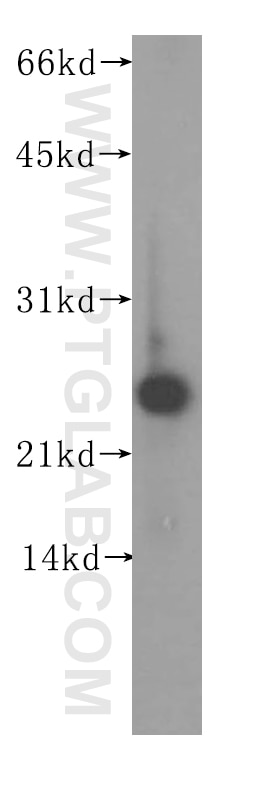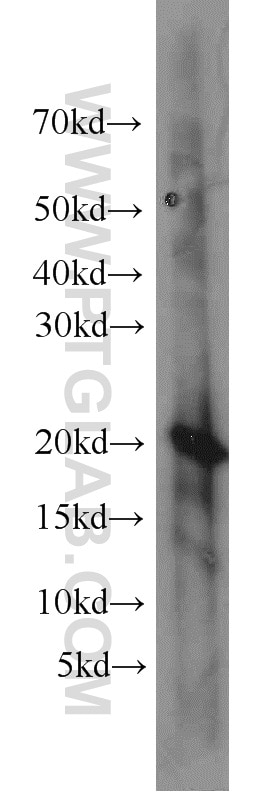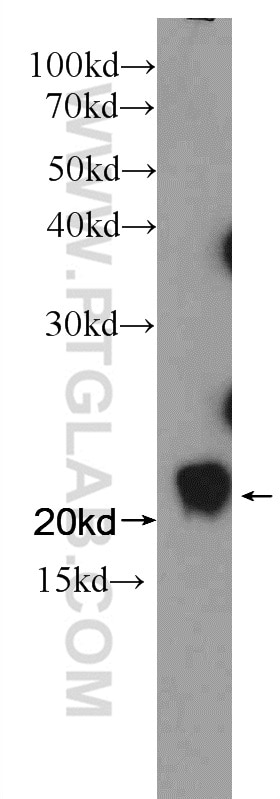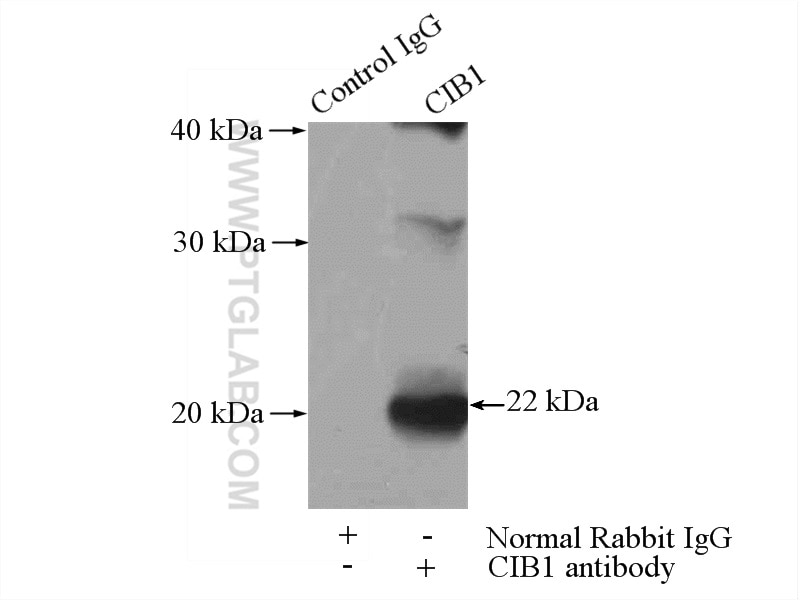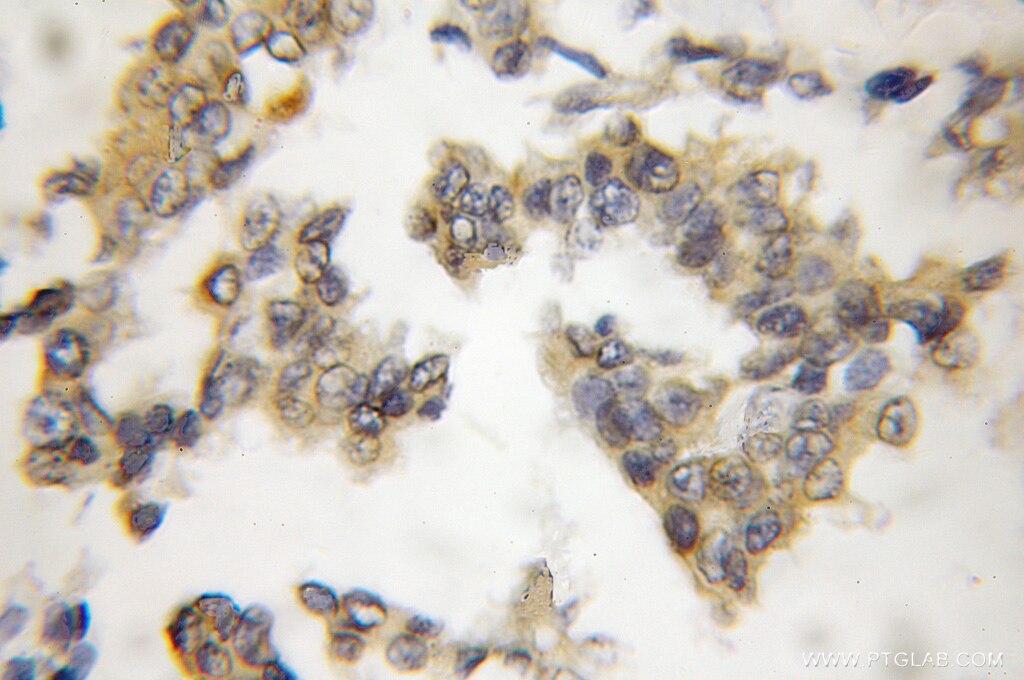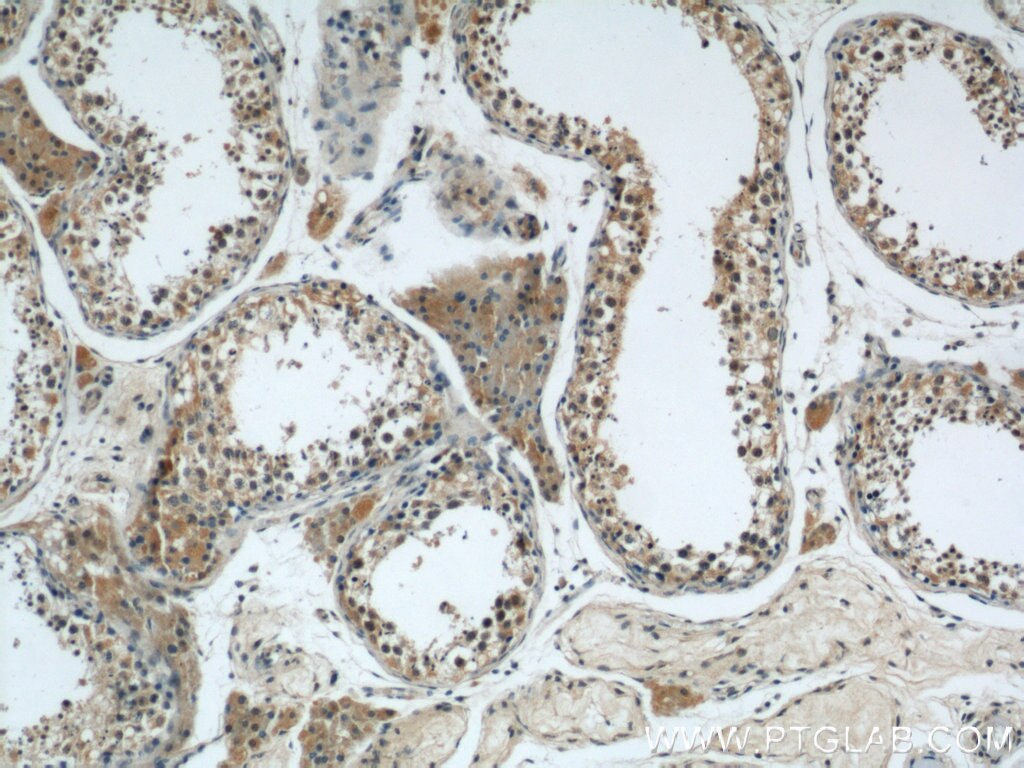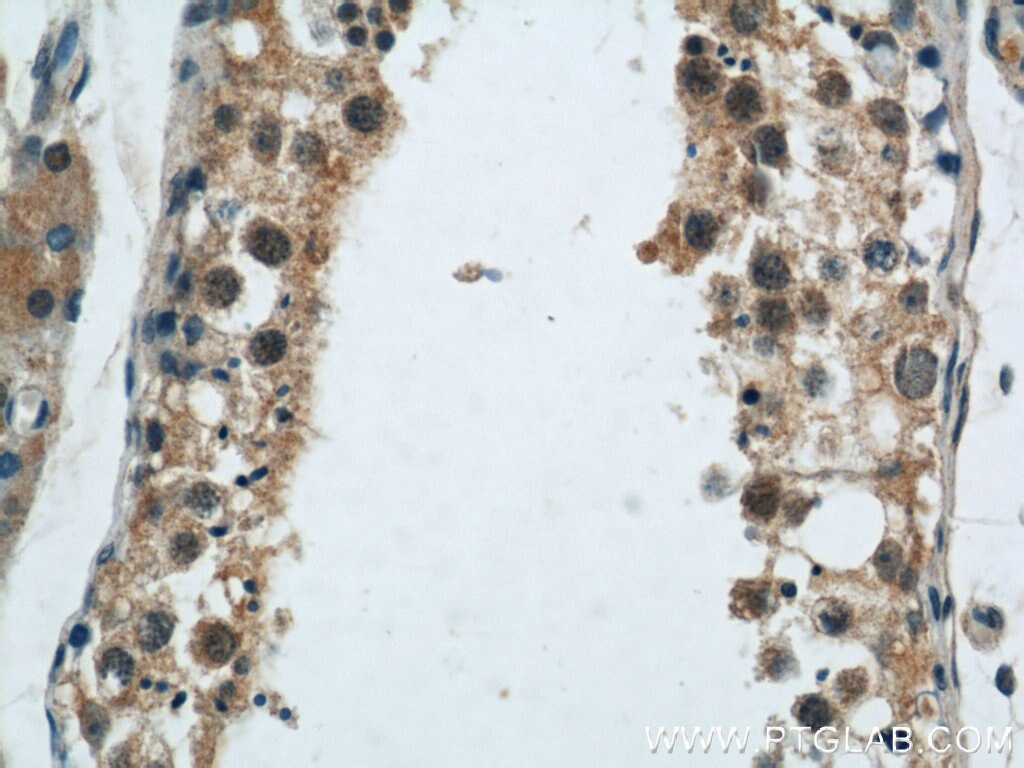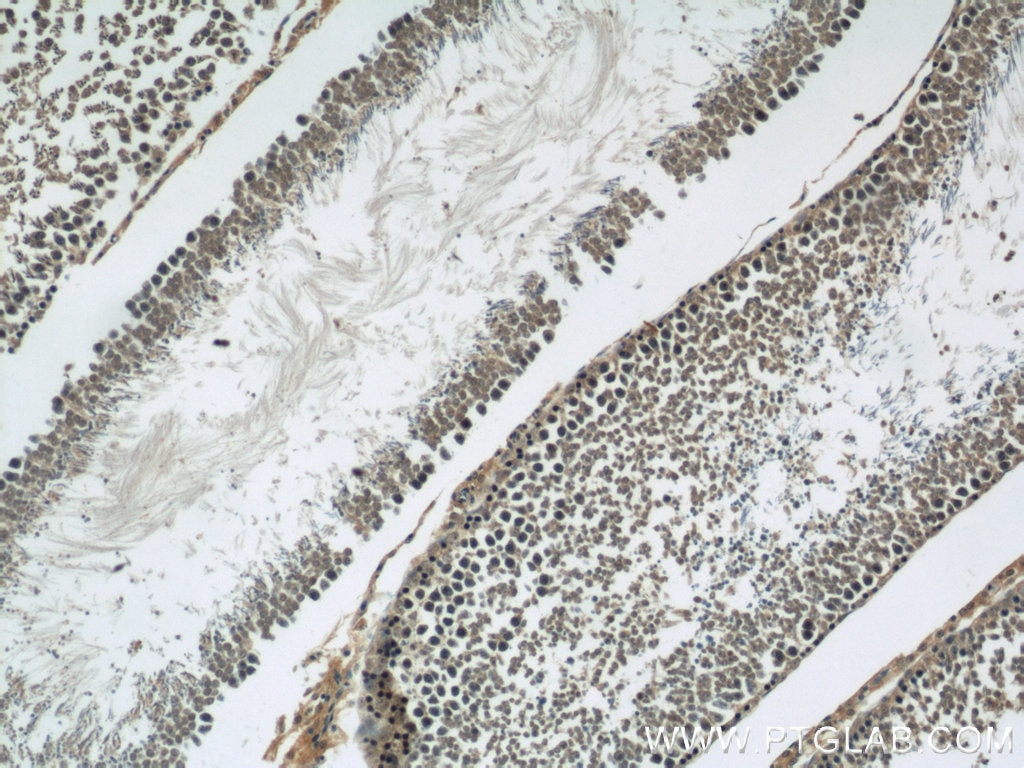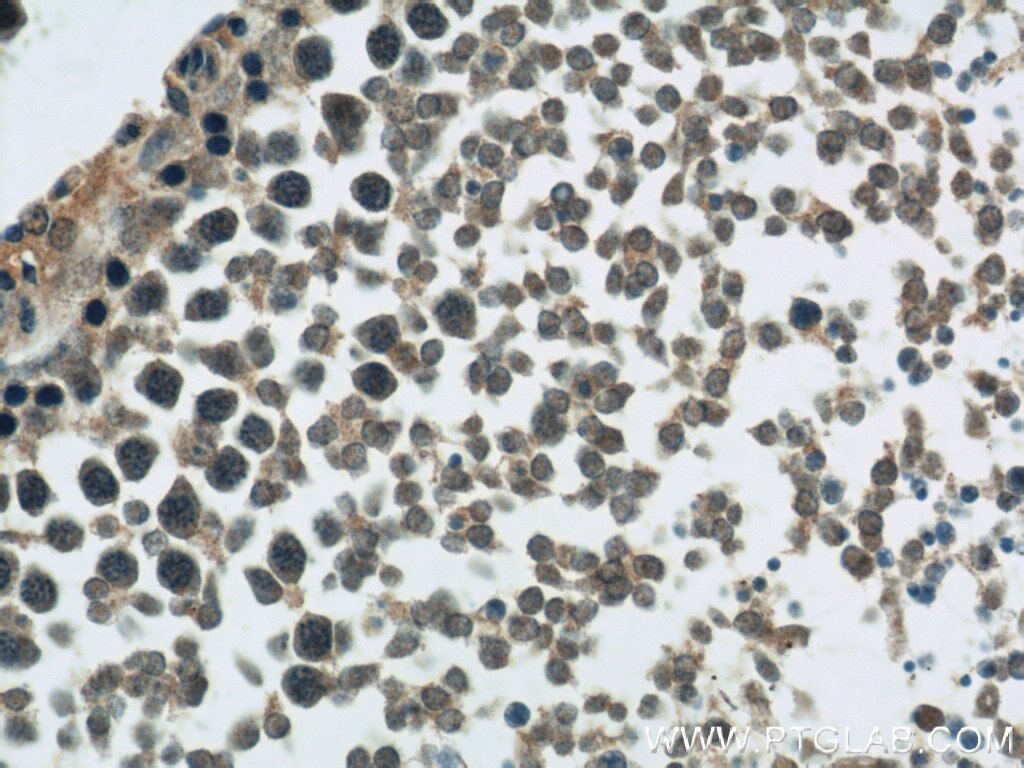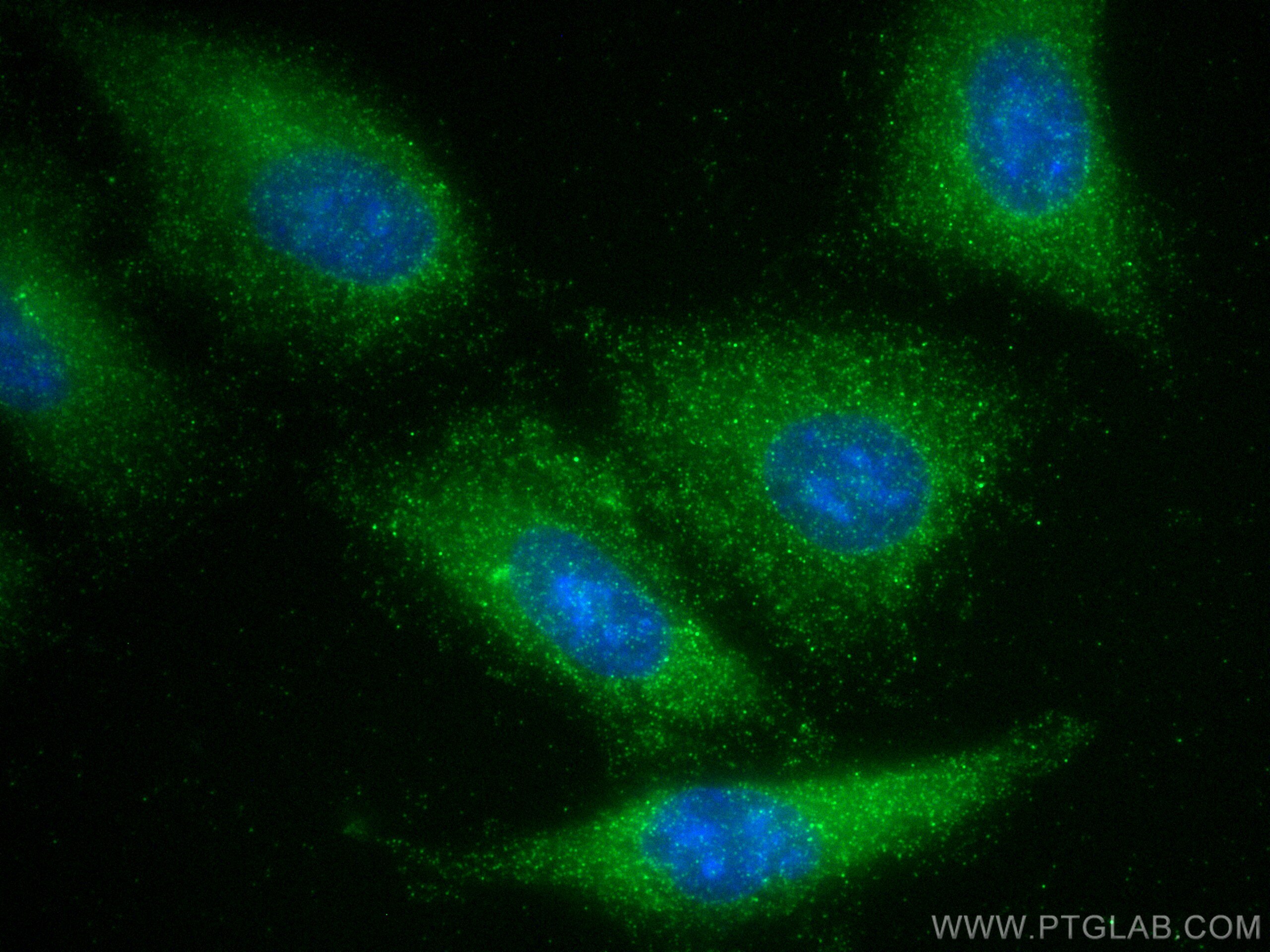- Phare
- Validé par KD/KO
Anticorps Polyclonal de lapin anti-CIB1
CIB1 Polyclonal Antibody for WB, IP, IF, IHC, ELISA
Hôte / Isotype
Lapin / IgG
Réactivité testée
Humain, rat, souris
Applications
WB, IHC, IF/ICC, IP, ELISA
Conjugaison
Non conjugué
N° de cat : 11823-1-AP
Synonymes
Galerie de données de validation
Applications testées
| Résultats positifs en WB | tissu hépatique humain, cellules HepG2, tissu testiculaire de rat |
| Résultats positifs en IP | tissu testiculaire de souris |
| Résultats positifs en IHC | tissu de cancer du sein humain, tissu testiculaire de rat, tissu testiculaire humain il est suggéré de démasquer l'antigène avec un tampon de TE buffer pH 9.0; (*) À défaut, 'le démasquage de l'antigène peut être 'effectué avec un tampon citrate pH 6,0. |
| Résultats positifs en IF/ICC | cellules A549, |
Dilution recommandée
| Application | Dilution |
|---|---|
| Western Blot (WB) | WB : 1:500-1:2400 |
| Immunoprécipitation (IP) | IP : 0.5-4.0 ug for 1.0-3.0 mg of total protein lysate |
| Immunohistochimie (IHC) | IHC : 1:20-1:200 |
| Immunofluorescence (IF)/ICC | IF/ICC : 1:50-1:500 |
| It is recommended that this reagent should be titrated in each testing system to obtain optimal results. | |
| Sample-dependent, check data in validation data gallery | |
Applications publiées
| KD/KO | See 4 publications below |
| WB | See 7 publications below |
| IHC | See 1 publications below |
| IF | See 3 publications below |
| IP | See 1 publications below |
Informations sur le produit
11823-1-AP cible CIB1 dans les applications de WB, IHC, IF/ICC, IP, ELISA et montre une réactivité avec des échantillons Humain, rat, souris
| Réactivité | Humain, rat, souris |
| Réactivité citée | rat, Humain, souris |
| Hôte / Isotype | Lapin / IgG |
| Clonalité | Polyclonal |
| Type | Anticorps |
| Immunogène | CIB1 Protéine recombinante Ag2391 |
| Nom complet | calcium and integrin binding 1 (calmyrin) |
| Masse moléculaire calculée | 22 kDa |
| Poids moléculaire observé | 22 kDa |
| Numéro d’acquisition GenBank | BC000846 |
| Symbole du gène | CIB1 |
| Identification du gène (NCBI) | 10519 |
| Conjugaison | Non conjugué |
| Forme | Liquide |
| Méthode de purification | Purification par affinité contre l'antigène |
| Tampon de stockage | PBS avec azoture de sodium à 0,02 % et glycérol à 50 % pH 7,3 |
| Conditions de stockage | Stocker à -20°C. Stable pendant un an après l'expédition. L'aliquotage n'est pas nécessaire pour le stockage à -20oC Les 20ul contiennent 0,1% de BSA. |
Informations générales
CIB1(Calcium and integrin-binding protein 1) is also named as CIB, KIP, PRKDCIP. It is an EF-hand-containing protein that binds multiple effector proteins, including the platelet αIIbβ3 integrin and several serine/threonine kinases and potentially modulates their function. It regulates platelet aggregation in hemostasis through a specific interaction with the alphaIIb cytoplasmic domain of platelet integrin alphaIIbbeta3.
Protocole
| Product Specific Protocols | |
|---|---|
| WB protocol for CIB1 antibody 11823-1-AP | Download protocol |
| IHC protocol for CIB1 antibody 11823-1-AP | Download protocol |
| IF protocol for CIB1 antibody 11823-1-AP | Download protocol |
| IP protocol for CIB1 antibody 11823-1-AP | Download protocol |
| Standard Protocols | |
|---|---|
| Click here to view our Standard Protocols |
Publications
| Species | Application | Title |
|---|---|---|
Cell Death Differ CHIP-mediated CIB1 ubiquitination regulated epithelial-mesenchymal transition and tumor metastasis in lung adenocarcinoma. | ||
PLoS Pathog CIB1 Synergizes with EphrinA2 to Regulate Kaposi's Sarcoma-Associated Herpesvirus Macropinocytic Entry in Human Microvascular Dermal Endothelial Cells.
| ||
FASEB J Identification of calcium and integrin-binding protein 1 as a novel regulator of production of amyloid β peptide using CRISPR/Cas9-based screening system.
| ||
J Virol p130Cas Scaffolds the Signalosome to Direct Adaptor-Effector Crosstalk During Kaposi's Sarcoma-Associated Herpesvirus Trafficking in Human Microvascular Dermal Endothelial Cells.
| ||
Front Mol Neurosci Expression of genes encoding the calcium signalosome in cellular and transgenic models of Huntington's disease. |
